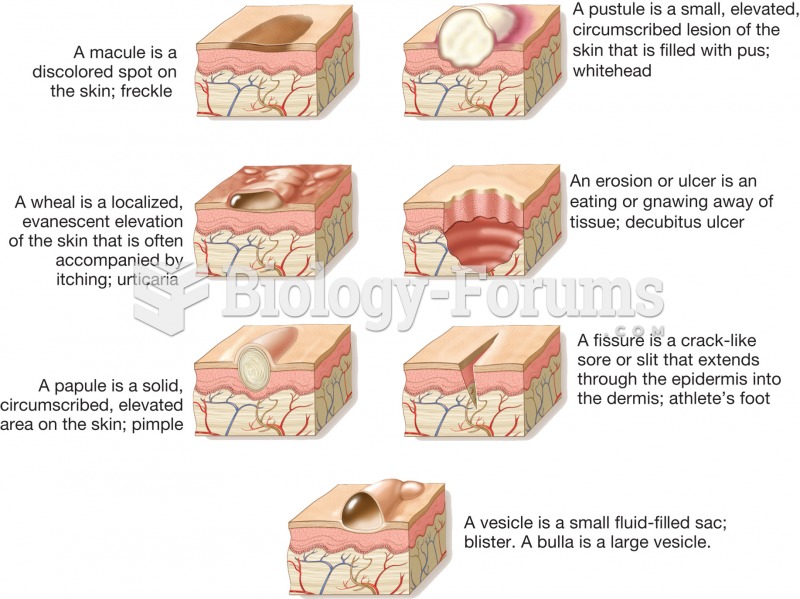Answer to Question 1
dry skin
tenting skin turgor
skin condition: ecchymosis, dry, tears, tenting
mucous membranes: dry, petechiae
+1 pedal edema
diminished bilateral pulses
cloudy, amber urine
Answer to Question 2
Medication Indications/Mechanism Nutritional Concerns
Catapres Antihypertensive -- -2 adrenergic agonist N/V, dry mouth, constipation, avoid alcohol
Procardia Calcium channel blocker -- vasodilator Nausea, vomiting, diarrhea or constipation; avoid alcohol, licorice, and grapefruit; take with a low-fat meal
Carvedilol Beta blocker -- reduce cardiac output Fluid retention, hyperglycemia; take with food
Lasix Diureticprevent fluid retention/can be used to treat hypertension Hypokalemia, increased thirst
Prednisone Immunosuppressantpr event rejection of transplant Increased appetite, osteoporosis, hyperglycemia, fluid retention, poor wound healing
Gengraf Immunosuppressant; prevent rejection of transplant Nausea, vomiting, upper abdominal pain, itching, loss of appetite, dark urine, clay-colored stools, jaundice, hyperkalemia
CellCept Immunosuppressant; prevent rejection of transplant GI bleeding, N/V, abdominal pain, dyspepsia, peripheral edema, hypophosphatemia, hypercholesterolemi a, hyperglycemia; do not take Ca, Mg, Fe, or Al supplements within 2 hours of taking; take on empty stomach
Fish oil Anti-inflammatory Increased risk of bleeding
Prinivil Antihypertensive (angiotensin-converting enzyme ACE inhibitor) Hyperkalemia; herbs may attenuate effects (e.g. cayenne, ginger, ginseng, licorice, etc.)
Sodium bicarbonate Normalize blood pH High in sodium
Take Fe supplement separately, 1 hr before or 2 hr after drug
Increased thirst
Increased weight (edema)
Renal caps Replace vitamins lost in dialysis GI irritation
N/V
Take after dialysis
Renvela Phosphate binder used in CKD Low-phosphorus diet
Nausea
Dyspepsia
Diarrhea
Constipation
Flatulence
Severe decrease in GI motility
Low serum phosphorus, calcium
Calcitriol Vitamin D Nausea, vomiting, stomach pain, constipation
Loss of appetite
Dry mouth, increased thirst
Metallic taste







